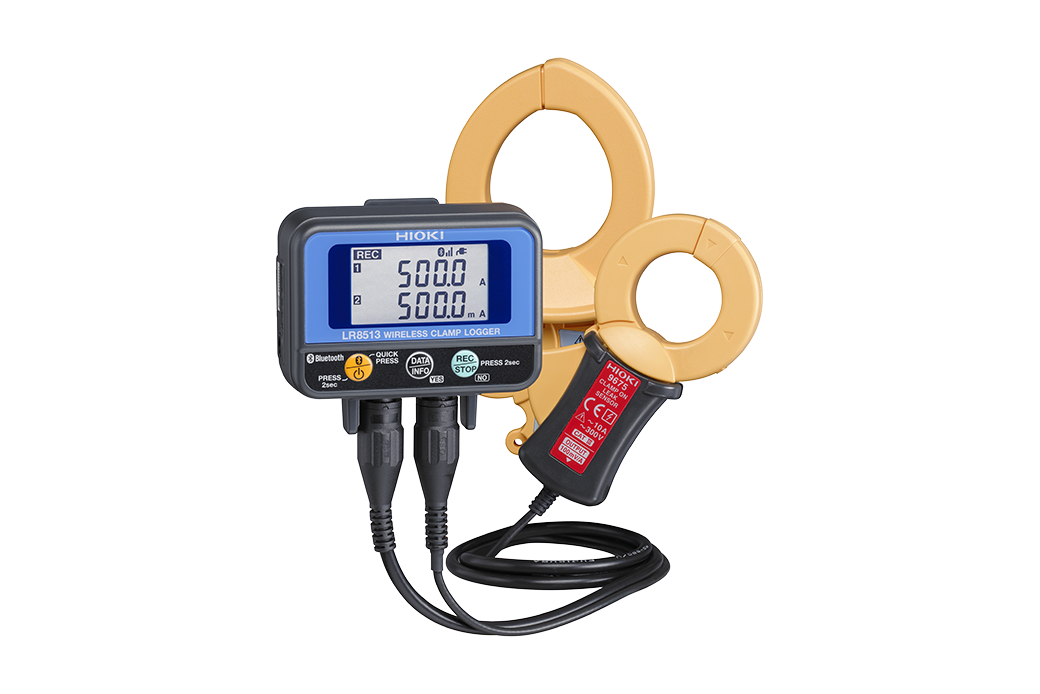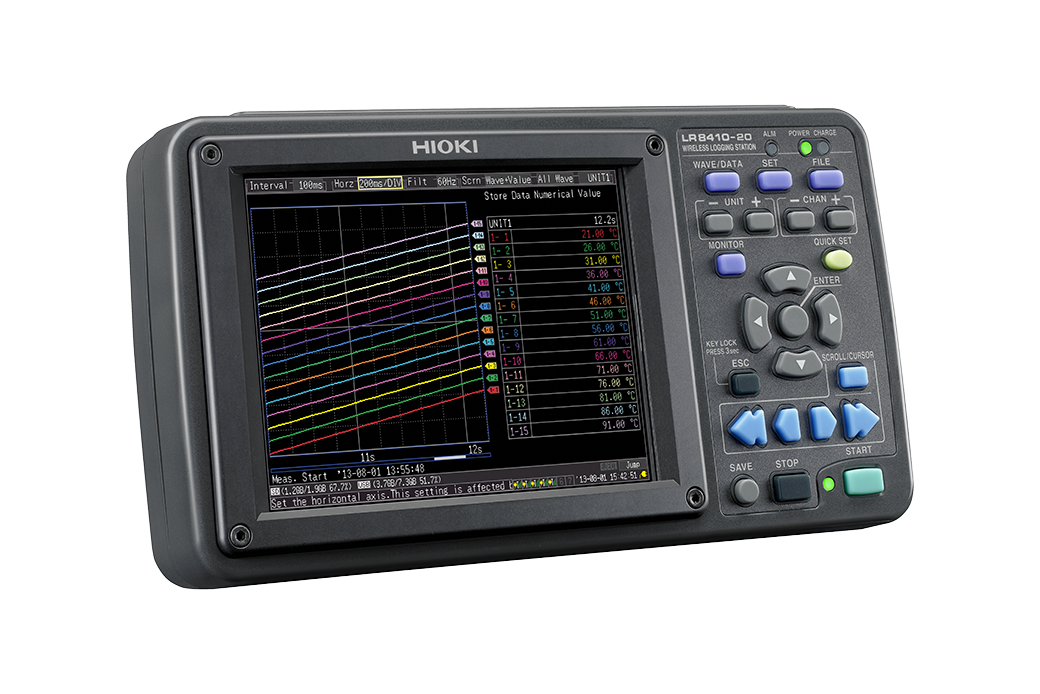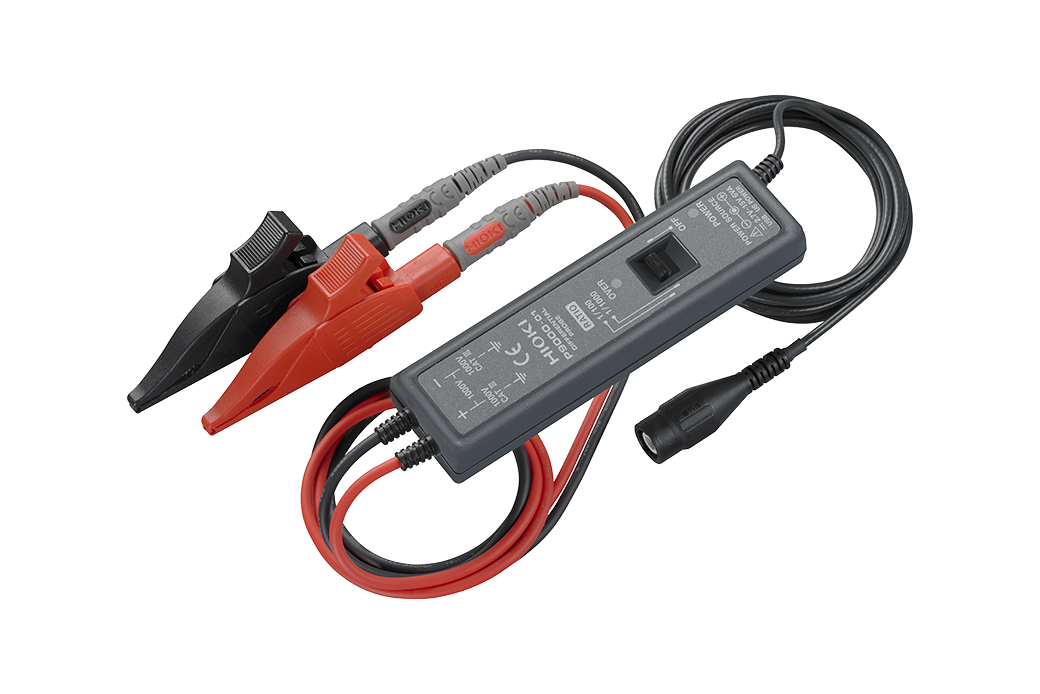Investigate the Cause of Tripped Circuit Breakers at Construction Sites
Circuit Breakers Trip Not only for Electrical Reasons
Electrical panels contain circuit breakers designed to trip and stop the flow of current to specific circuits and appliances if there is a fault or an overload to the system in order to protect the circuit from damage. However, breakers are also known to trip when there is a severe jot or strong vibration, especially magnetic circuit breakers which incorporate a hinged metal tigger that closes in response to movement of the internal magnetic coil, making it particularly vulnerable to vibration. Tripped breakers interrupt the workflow, but it is a welcome interruption that properly warns users that the load is drawing too much for the electrical system to handle. It is another matter when reasons not related to the use of electricity cause the breaker to trip and disrupt the workflow, lowering productivity.
Sudden jolts and powerful vibrations are often experienced at construction sites operated by drills, forklifts, cement trucks, jackhammers and other heavy equipment. Vibrations from these machinery can cause circuit breakers on electrical systems, which may already be close to capacity, to trip. The first thing onsite electricians do to address a tripped breaker is always to identify the equipment that is causing the overload, which is easier to deduce by reviewing machinery operation sequence. However, it may be more difficult to accurately conclude whether vibrations and physical movement at the site are the real culprit.
Sudden jolts and powerful vibrations are often experienced at construction sites operated by drills, forklifts, cement trucks, jackhammers and other heavy equipment. Vibrations from these machinery can cause circuit breakers on electrical systems, which may already be close to capacity, to trip. The first thing onsite electricians do to address a tripped breaker is always to identify the equipment that is causing the overload, which is easier to deduce by reviewing machinery operation sequence. However, it may be more difficult to accurately conclude whether vibrations and physical movement at the site are the real culprit.
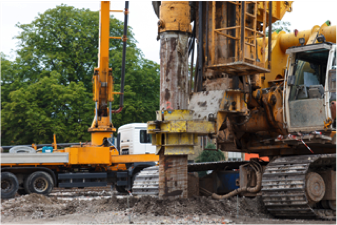
A Quick and Easy Solution to Ascertain the Cause of Tripped Breakers
To find the true cause of tripped breakers on a construction site, a combination of test equipment that includes a data logger, vibration meter, differential probe, and current clamps will aid in monitoring both the physical and electrical characteristics over a long term. When a circuit breaker trips, the electrician can return to the logged data to analyze all of the vibration, voltage and current signals on the same time axis to identify the culprit and propose preventative or countermeasures.

Measuring Instrument Setup
The illustration on the right shows how HIOKI test and measurement equipment, paired with a commercially available vibration meter, can be set up for this application:
1. The HIOKI LR8410 Wireless Logging Station + LR8510 Wireless Voltage/Temp Unit remotely captures voltage, current and vibration data all at the same time via Bluetooth
2. 3 units of the HIOKI LR8513 Wireless Clamp Logger paired with 2 x CT6500 Clamp On Sensors each measures 6 channels of current at the electrical panel
3. P9000-02 Differential Probe x 3 measures the 3 voltage phases on the panel
4. Commercially available vibration meter with analog output, such as Showasokki Model-2502 or 25908
1. The HIOKI LR8410 Wireless Logging Station + LR8510 Wireless Voltage/Temp Unit remotely captures voltage, current and vibration data all at the same time via Bluetooth
2. 3 units of the HIOKI LR8513 Wireless Clamp Logger paired with 2 x CT6500 Clamp On Sensors each measures 6 channels of current at the electrical panel
3. P9000-02 Differential Probe x 3 measures the 3 voltage phases on the panel
4. Commercially available vibration meter with analog output, such as Showasokki Model-2502 or 25908
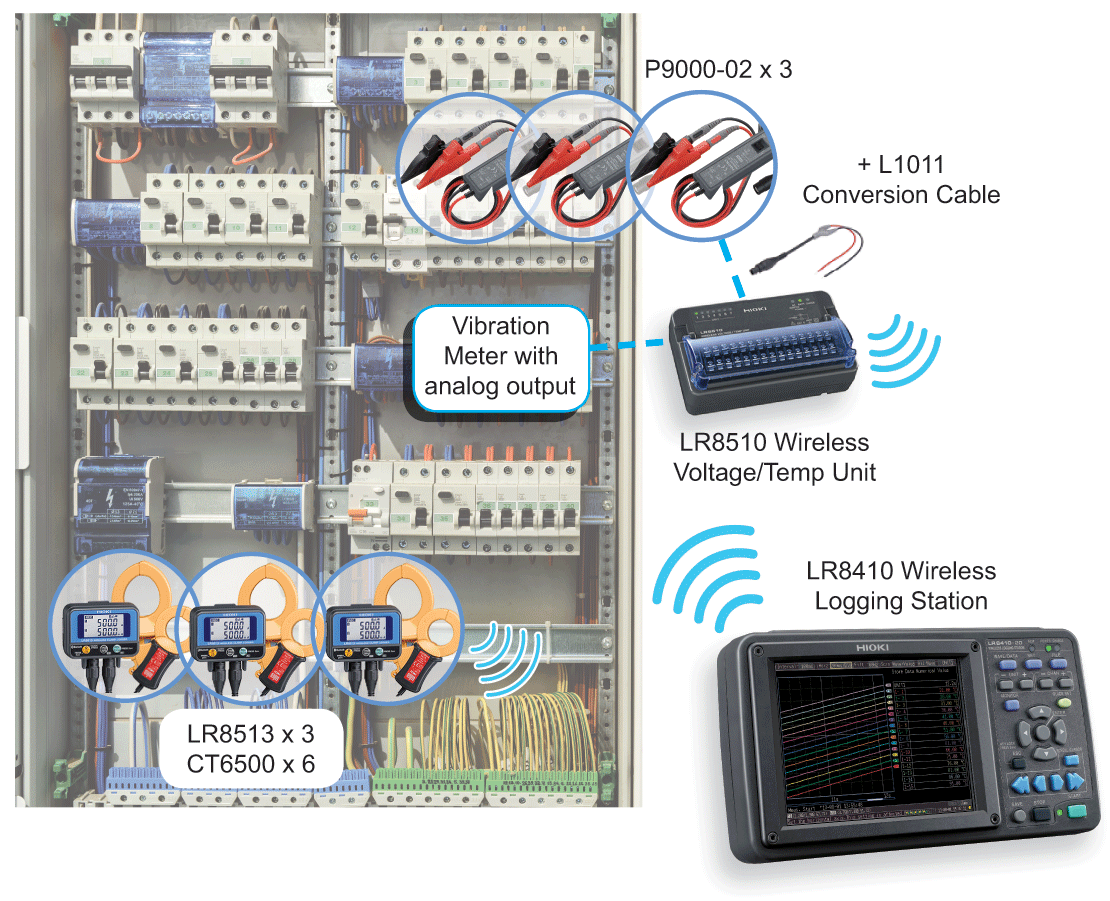
Countermeasures to Address Inadvertently Tripped Breakers
By measuring the current, voltage and vibration characteristics at the electric panel simultaneously, technicians can isolate the root cause of the tripped breaker quickly and easily. Convenient tools such as the differential probe and clamp sensors let you make safe connections to the wiring on the electrical panel, and all of the data collected at the LR8410 Wireless Logging Station can be analyzed as a single data set.
Being able to correlate tripped circuit breakers with certain sources of vibration and jolts made by construction equipment can help facilities managers plan the use of equipment in a more efficient way so as to avoid interruptions to the power supply and ultimately, production downtime.
Being able to correlate tripped circuit breakers with certain sources of vibration and jolts made by construction equipment can help facilities managers plan the use of equipment in a more efficient way so as to avoid interruptions to the power supply and ultimately, production downtime.


